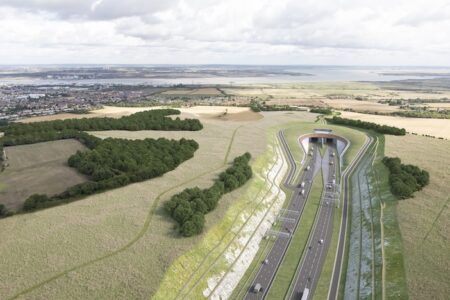As part of its long-term aim of reducing the USA’s reliance on fossil fuels, the US Department of Transportation’s (USDOT) Federal Highway Administration (FHWA) has announced 55 routes that will serve as the basis for a national network of ‘alternative fuel’ corridors spanning 35 states.
The initial network is nearly 85,000 miles (136,800km) long, the FHWA says more miles will be added in the future to accommodate electric, hydrogen, propane and natural gas vehicles as additional fueling and charging stations are built. The corridors that have been designated as ‘sign-ready’, meaning routes where alternative fuel stations are currently in operation, will be eligible to feature new signs alerting drivers to where they can find fuel for their alternative fuel vehicles. The new alternative fuel vehicle (AFV) corridor signs were designed to be easily recognizable, and are similar to existing signage that alerts drivers to gas stations, food, and lodging. The designation of these corridors fulfills a directive in the ‘Fixing America’s Surface Transportation’ (FAST) Act.
In July, the US Transportation Secretary Anthony Foxx called on states to nominate national plug-in electric vehicle (EV) charging and hydrogen, propane and natural gas fueling corridors along major highways. The specific fuels were designated by Congress in the FAST Act. In 2015, the USA pledged to reduce greenhouse gas (GHG) emissions by 80% or more by 2050. By supporting lower-emission vehicles, alternative fuel corridors will help to reduce transportation emissions, the leading source of US GHG emissions. According to new FHWA data, US drivers drove more than 3.15 trillion miles last year and consumed nearly 72 billion gallons of gasoline in the first half of 2016 a 3% increase over the same period a year earlier and the largest percentage increase in nearly two decades.
Announcing the new initiative, Foxx said, “Alternative fuels and electric vehicles will play an integral part in the future of America’s transportation system. We have a duty to help drivers identify routes that will help them refuel and recharge those vehicles, and designating these corridors on our highways is a first step.”
Federal Highway Administrator Gregory Nadeau added, “Identifying where alternative fueling stations can be found will help the public in many ways. This initial designation sets the stage for the next round of nominations early next year and begins a conversation with stakeholders about developing and implementing a vision to enable coast to coast travel using alternative fuels.”




